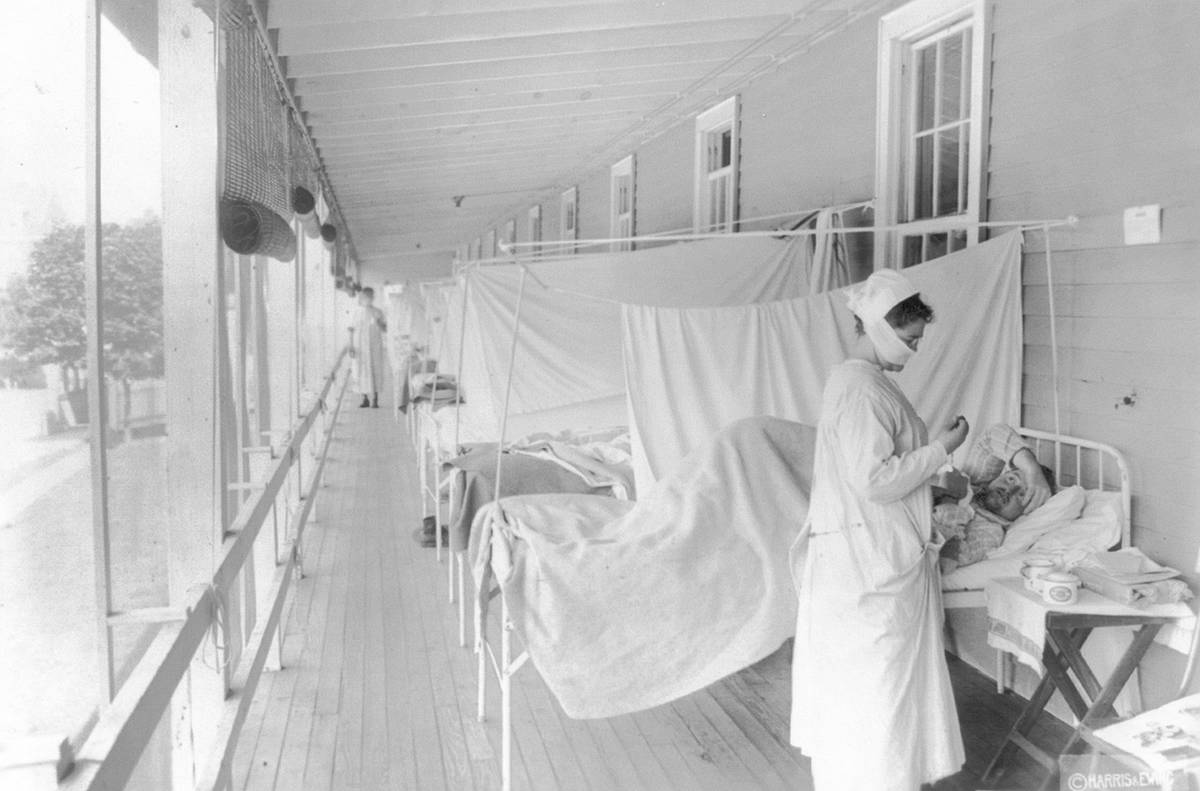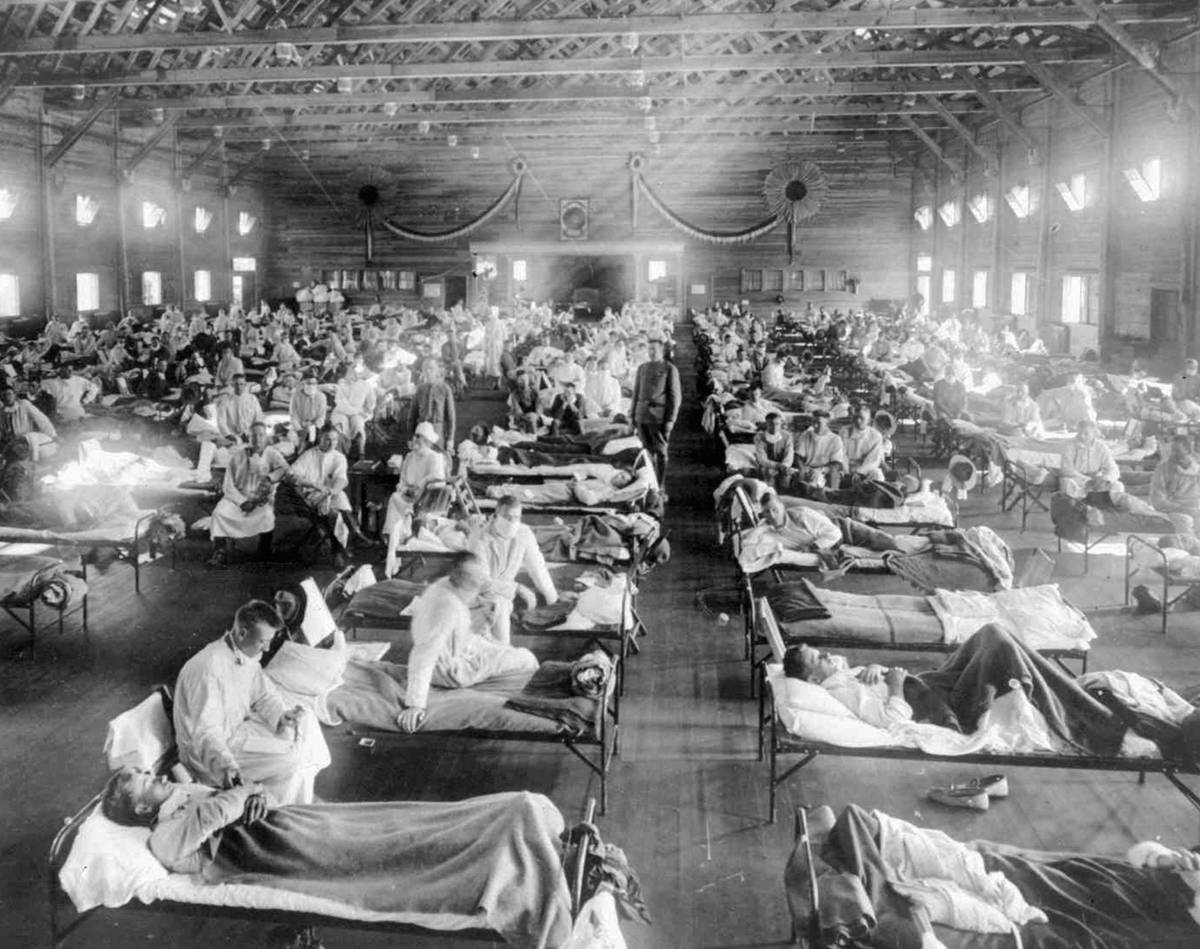A century ago, not wearing a mask in Las Vegas could draw a fine
by John Przybys

Wearing face masks isn’t just a 21st-century thing. Local historian and journalist Robert Stoldal found that some localities in Nevada enacted laws requiring citizens to wear masks in public during the 1918-19 flu pandemic.
That so-called Spanish flu pandemic killed as many as 50 million people around the world and about 675,000 in the United States. In a story on the History channel’s website, author Becky Little notes that while most people complied with local mask laws during that period, some — mirroring complaints heard today — complained that masks were uncomfortable or ineffective, created a sense of false security, were bad for business or violated civil liberties
In San Francisco, opponents of the city’s mask law even formed an “Anti-Mask League” that, Little writes, drew more than 2,000 dissenters to a public meeting.
The 1918-19 pandemic officially caused about 40 deaths in Southern Nevada. On Nov. 4, 1918, the Las Vegas City Commission passed an ordinance requiring citizens to wear in public masks made of at least four thicknesses of gauze material, Stoldal said.
The emergency legislation took effect less than two hours after its passage, and violations meant a fine of $5 to $100, up to 60 days in jail or both.
The city even hired an officer to enforce the law for about six weeks, Stoldal said. Just four days after the law’s passage, four men appeared in court for not wearing masks, and all were let off with warnings.
Four unmasked miscreants in Tonopah weren’t so lucky. According to Stoldal, the Reno Gazette-Journal reported that they were sentenced to 60 hours’ incarceration “in lieu of a fine of five dollars a head.”
The men had masks, the paper reported, “but through stubbornness refused to wear them. Unless they change their minds after the enforced vacation they will be subjected to another sentence, says the judge.”
Stoldal said compliance with Las Vegas’ mask law was good, mostly because the flu hit “hard and fast,” with deaths occurring within a week of the first cases. With no cure, fearful citizens followed authorities’ advice to wear a mask to stop the flu’s spread.
In November 1918, the Goldfield News and Weekly Tribune offered a rousing pro-mask pep talk, telling readers that “while you are observing the (mask) law just keep in mind that you have a right to demand that others observe it.
“The individual who hasn’t respect enough for others to avoid exposing them to danger hasn’t any feelings that are worth respecting. Don’t be afraid of hurting them.”
Related
Mask or no mask? Ethics, personality type factor in our decision